
I like to do both! (I share #PhishPlots ⭕️ 📊)
Remember: Analyzing Phish stats does not change anyone's enjoyment of the art, don't take it too seriously (I don't, and I spend the time to do it!)



just for fun ... maybe it provides some context for the discussion 📈🤓

just for fun ... maybe it provides some context for the discussion 📈🤓
perhaps unsurprisingly, almost all jamchart versions are longer than the moving average (blue line) #PhishPlots
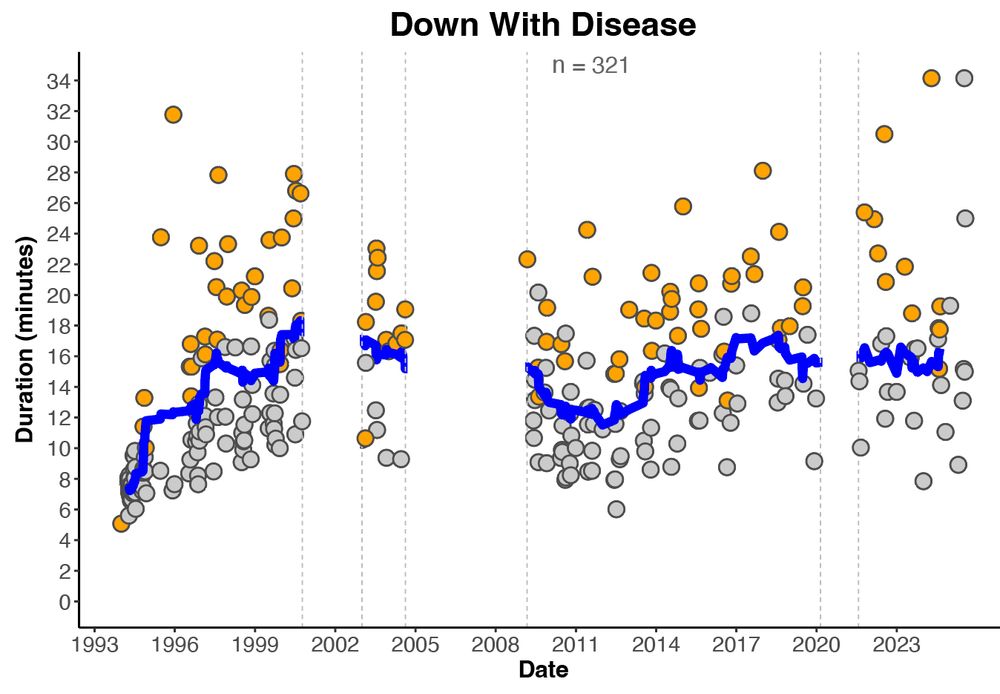
perhaps unsurprisingly, almost all jamchart versions are longer than the moving average (blue line) #PhishPlots
check out the uptick in length in 4.0 (compared to 3.0)
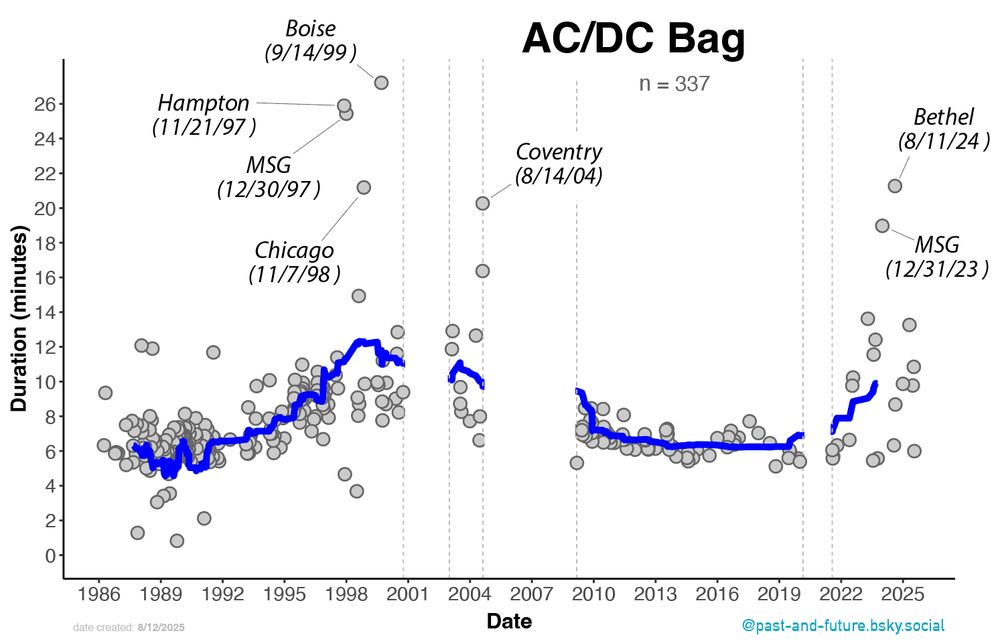
check out the uptick in length in 4.0 (compared to 3.0)
none of this really matters, it's just nerdy fun ... if you all keep proposing these ideas on the pod I'll do more of this
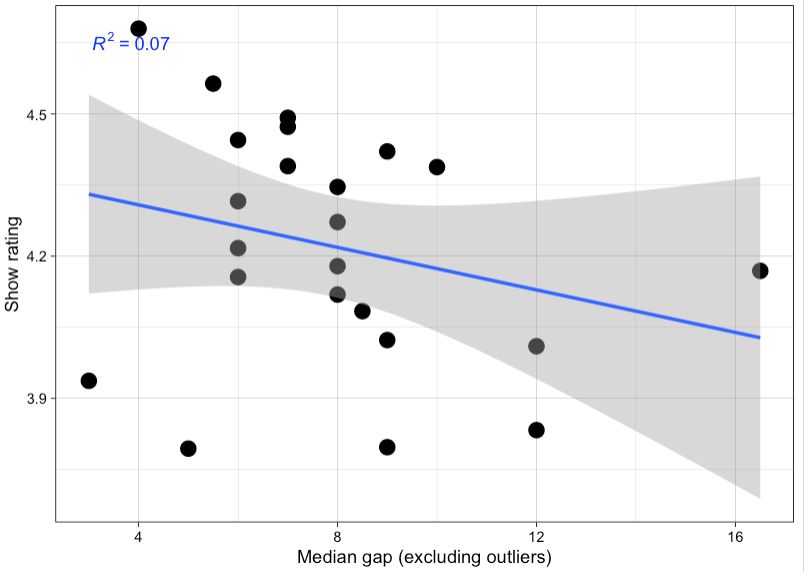
none of this really matters, it's just nerdy fun ... if you all keep proposing these ideas on the pod I'll do more of this

my gosh ... 2021, 2024, and 2025

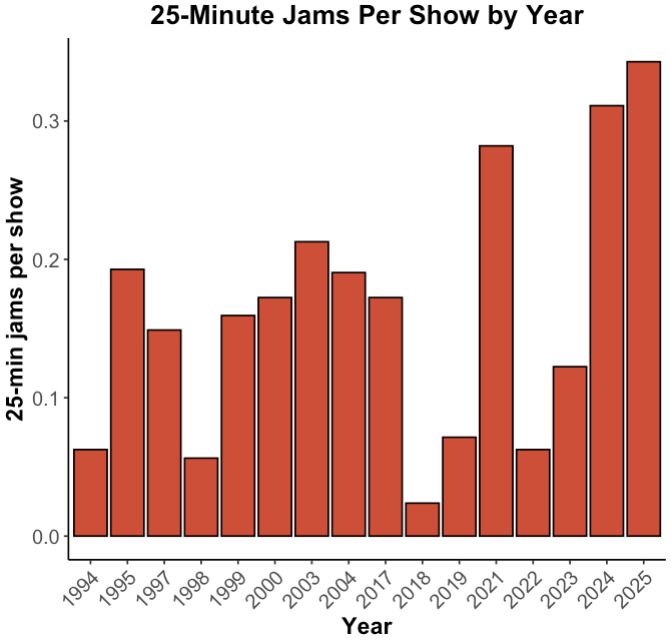
my gosh ... 2021, 2024, and 2025
A bunch of bluegrass-y tunes up there near the top.

A bunch of bluegrass-y tunes up there near the top.
First, here's a chart of the most frequently played songs (with at least four performances). We all know why Tweezer Reprise is at the top 🤩

First, here's a chart of the most frequently played songs (with at least four performances). We all know why Tweezer Reprise is at the top 🤩
However, I agree that the average is a misleading stat (for reasons you discussed). The median would be more appropriate, but need to do add'l work.
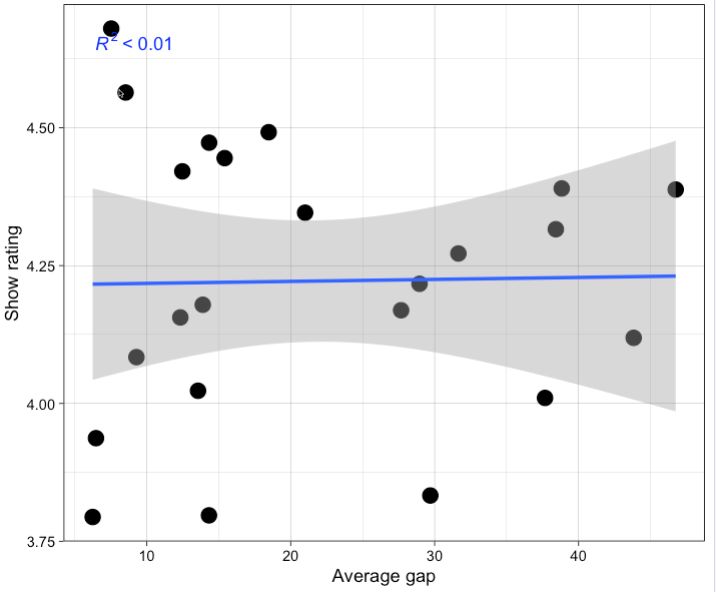
However, I agree that the average is a misleading stat (for reasons you discussed). The median would be more appropriate, but need to do add'l work.





I'll likely skip it on a relisten, but it was fun in the moment
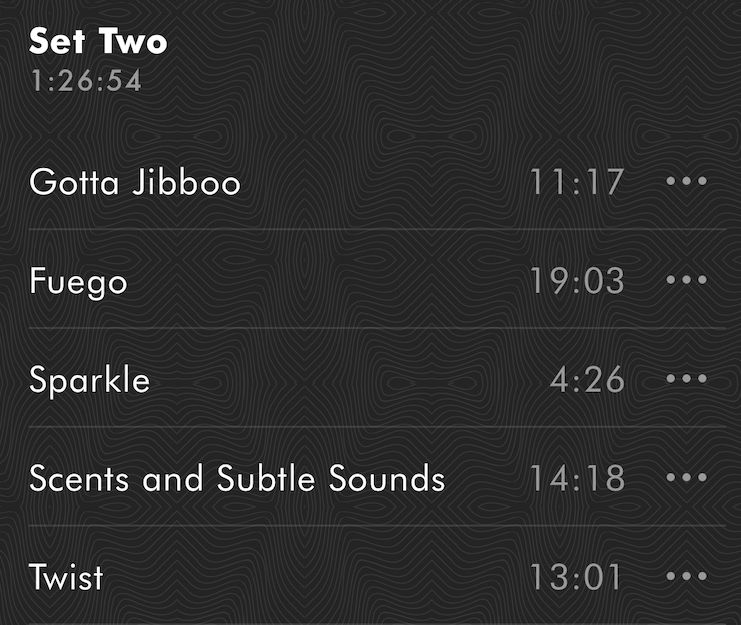
I'll likely skip it on a relisten, but it was fun in the moment
the higher the number (and bold line, which is a moving average) the longer the gap between performances ... the lower it is, the more frequently it's played #PhishPlots
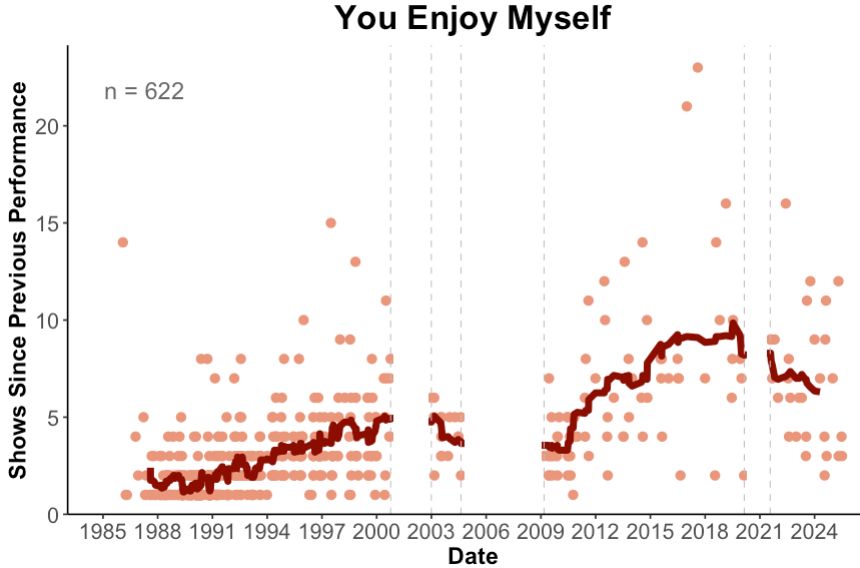
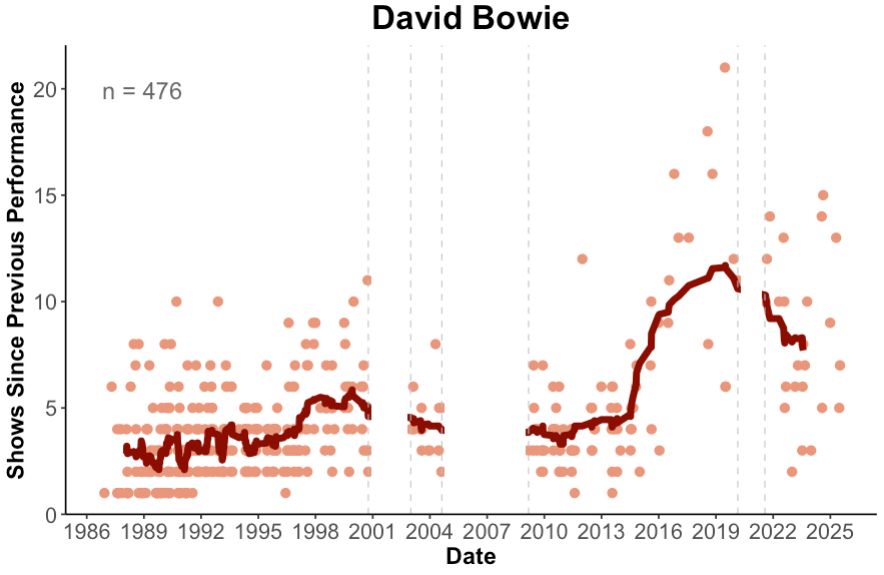
the higher the number (and bold line, which is a moving average) the longer the gap between performances ... the lower it is, the more frequently it's played #PhishPlots
for example, here's Camel Walk that wasn't played from 1989 to 1995, resulting in this one large number and making it difficult to see the rest of the data –– need to think about this more
3/3

for example, here's Camel Walk that wasn't played from 1989 to 1995, resulting in this one large number and making it difficult to see the rest of the data –– need to think about this more
3/3
the vertical axis is the number of shows since previous performance (the number in the 'Gap Chart') and date on the horizontal axis –– the bold line is a moving average
2/3

the vertical axis is the number of shows since previous performance (the number in the 'Gap Chart') and date on the horizontal axis –– the bold line is a moving average
2/3
this is useful to see what songs are in regular rotation (small gap) versus rare (large gap)
1/3


this is useful to see what songs are in regular rotation (small gap) versus rare (large gap)
1/3







